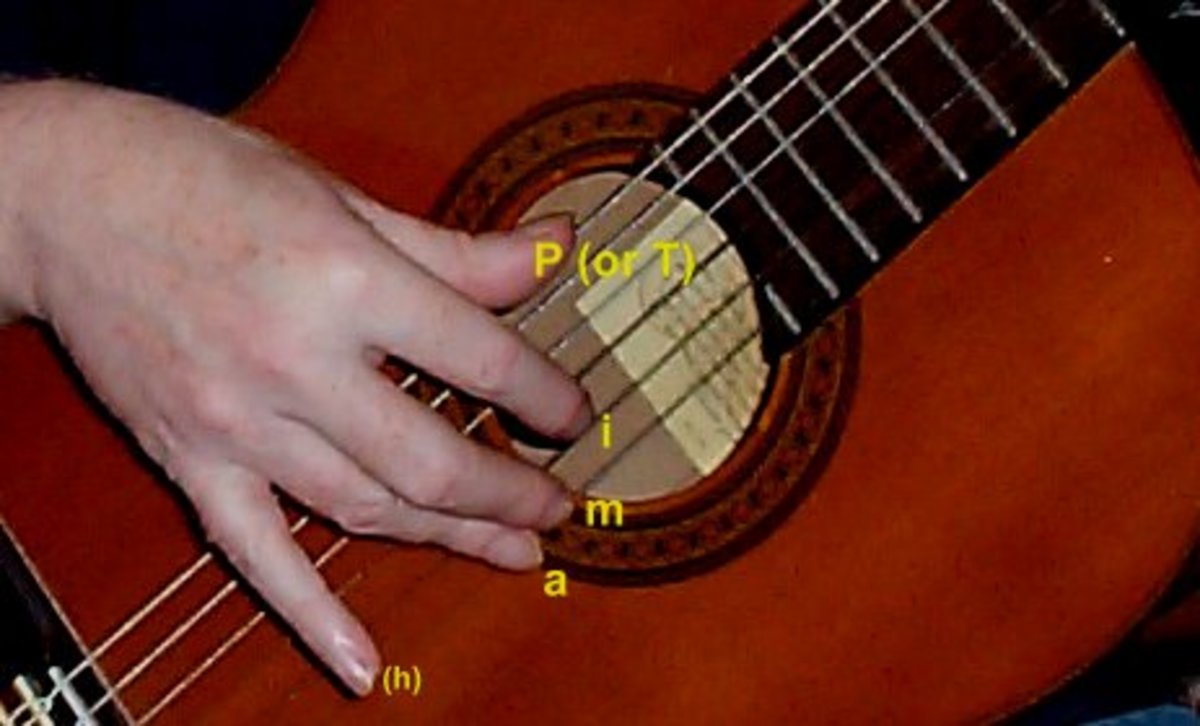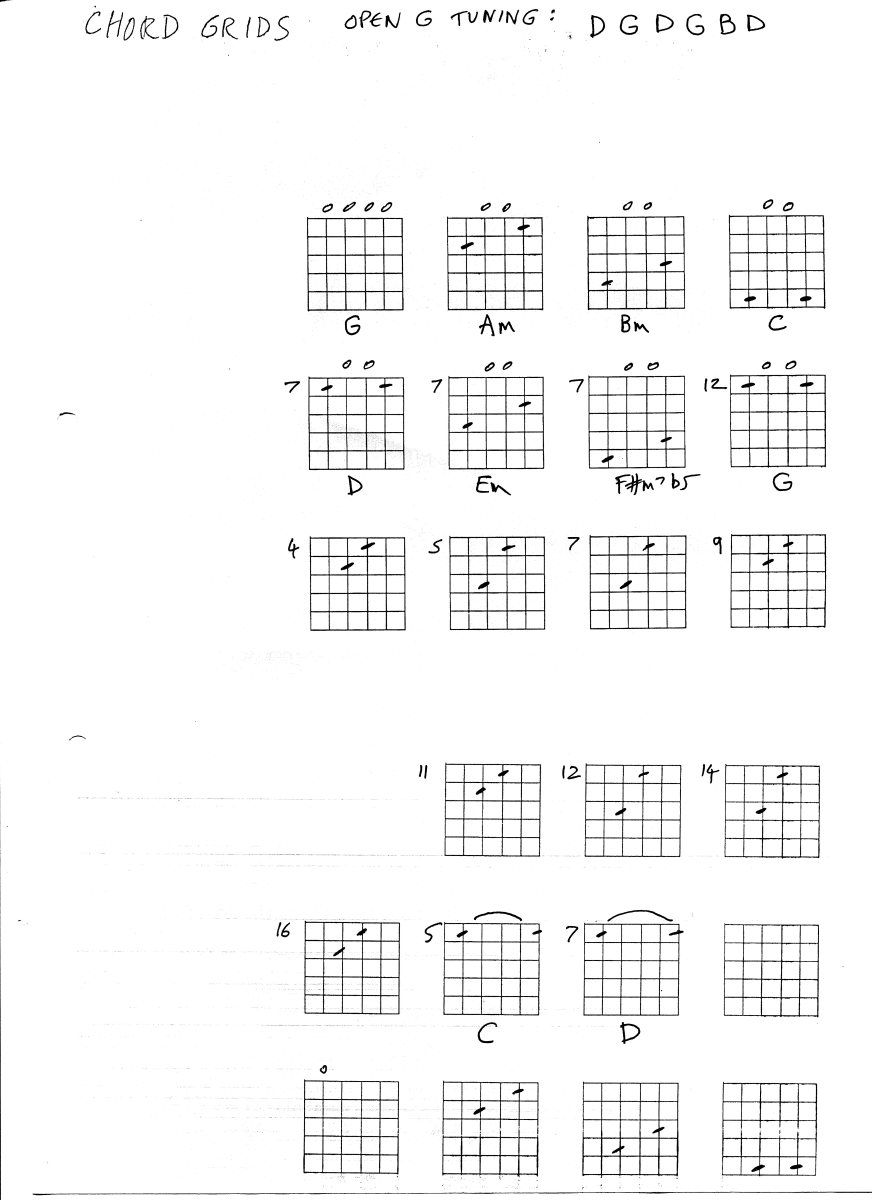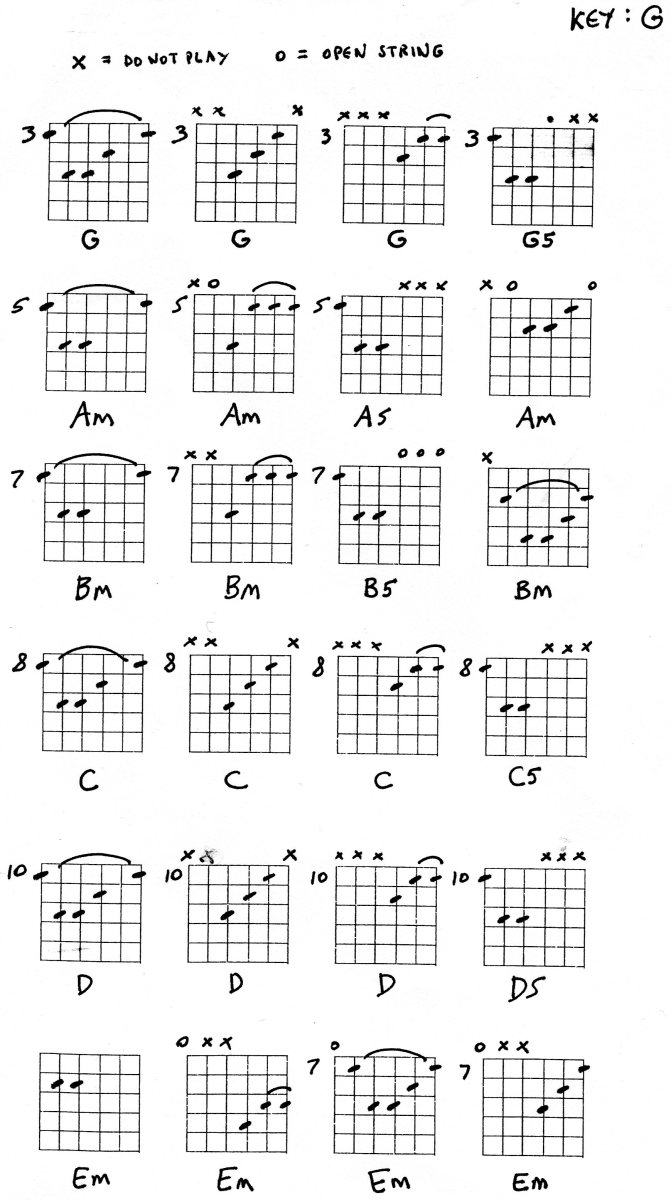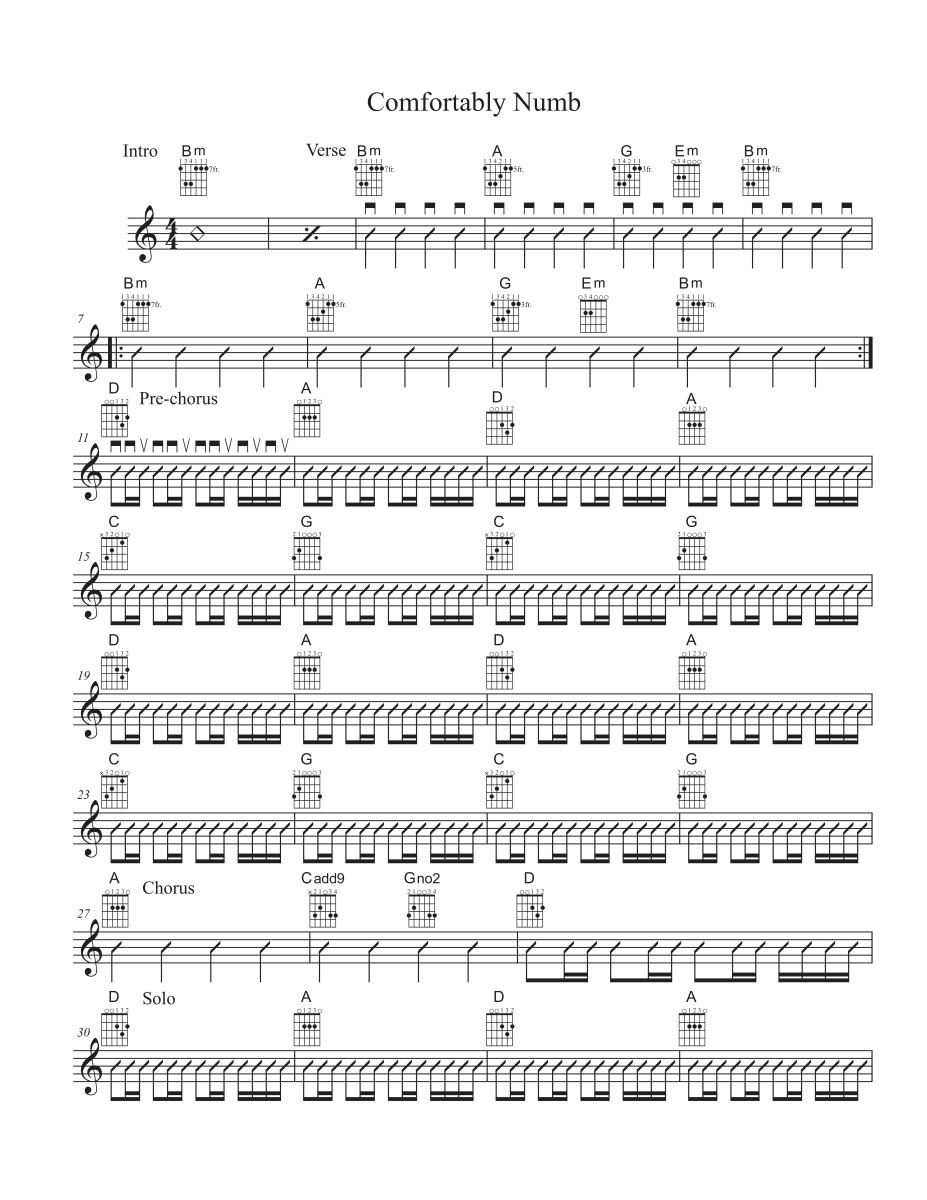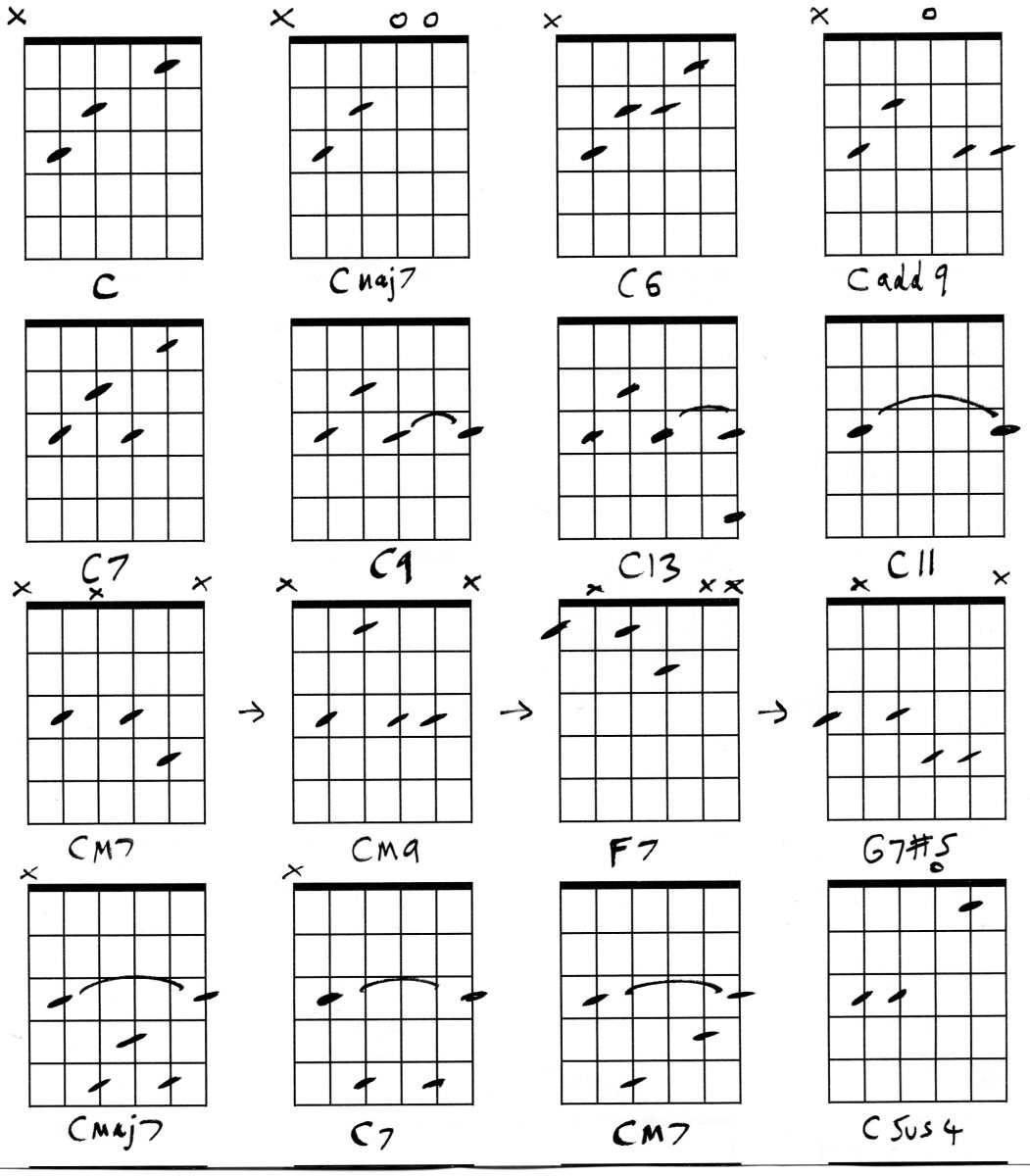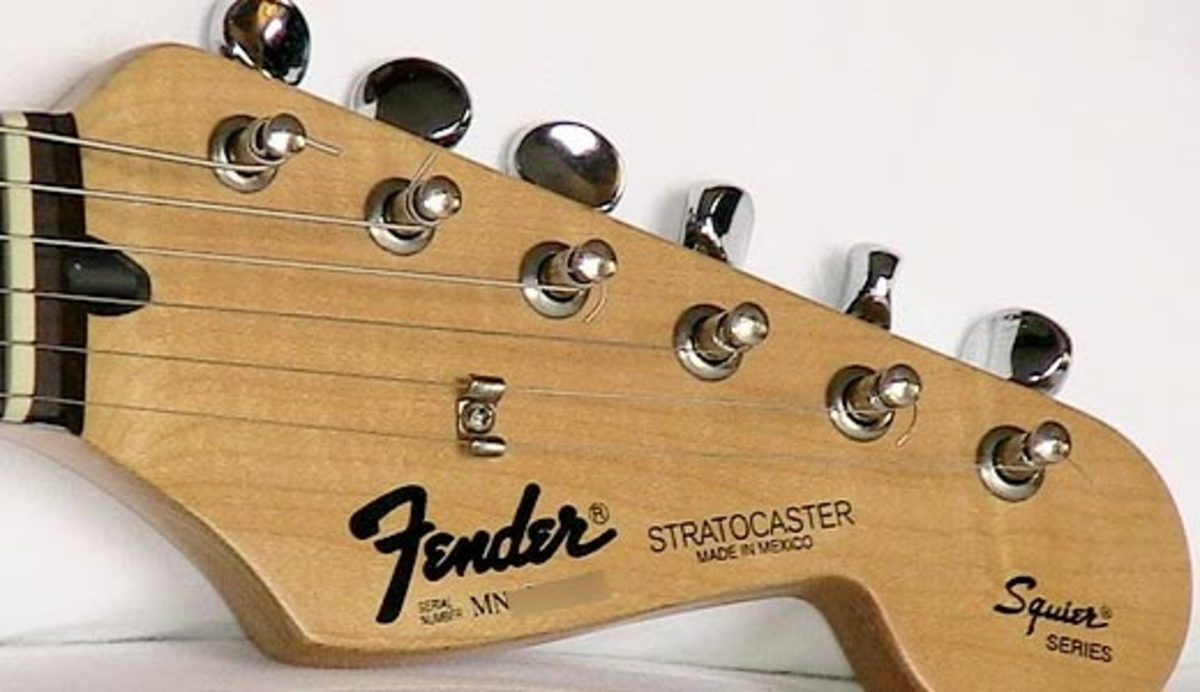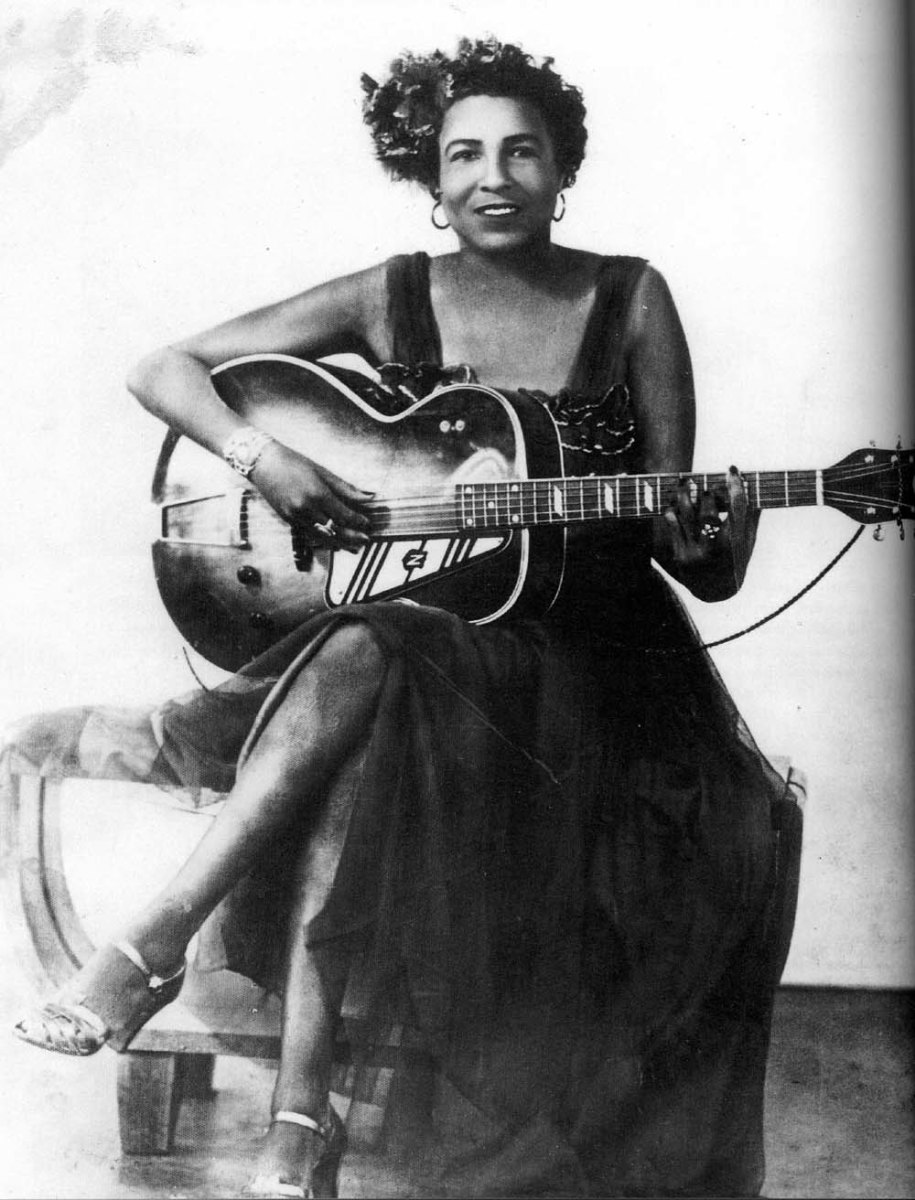Guitar Lesson and Theory
Using chord options
At least 90% of the time guitarists are playing chords rather than lead, so it makes sense to reflect that in your practice time. Here we'll be looking at learning at least 4 ways to play the same chord, and linking it to the major scale of the chord in question.
- Try to know at least 4 ways of playing all the chords, especially major, minor, 7th and maj7 chords. This will really help you understand the guitar neck, and should also make it much easier to play songs.
- Due to the pattern based approach that you can take, the guitar chords you learn can almost always be moved up the neck, sometimes with slight alterations due to open strings.
- This is very good news, as learning one shape can give you 11 different chords as the shape is moved up the neck.
- Sideways movement of chord shapes is also a very useful exercise.It won't always work, but smaller 2 and 3 note chords probably will.
- Chord grids below read like this: the 6 vertical lines are the strings, the horizontal lines are the frets. The headstock would be at the top of the diagram.
Chord options - major chords
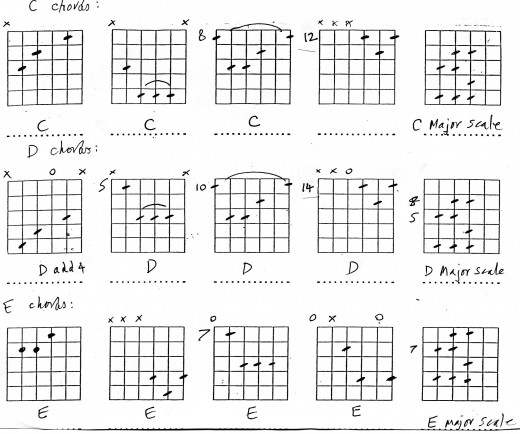
C Chords
When playing the chords, watch for the cross against a string - meaning, don't play this string.
Many guitar chords can be classified using the C A G E D system - see my other hubs for more info on this.
- The first two shapes are a C shape, and an A shape. The A shape could be a barre chord, but I'll usually play it like this, using little finger to cover the strings shown with the barre loop sign.
- Note that the root note (C) is the same for both chord shapes.
- Now look at the C major scale pattern - the same root note is used.
- Once you've learned the scale pattern you can just move it up the neck for different keys. So learning one pattern gives you 11 different scales as long as I've counted correctly!
D Chords
If you move everything up two frets (C to D is two frets) you can see how the same pattern of chords can be used, just moved up the neck.
- The major scale is identical, just up 2 frets from the C major scale shape
- The first chord has an open string, but will often sound great, depending on the key.
E chords
Using the CAGED system - we have an E shape, a D shape and a A shape.
- The D shape is no good for strumming chords, but is useful if you are playing lead or with another guitar. You can also use the open 6th string (E) if you fingerpick.
- The final shape is quite rare - but sounds great
- Again, the same scale pattern can be used, this time starting at Fret 7 on string 5.
Altering the chords
Here is a good exercise -
- Convert all these chord shapes to 7th chords
- You will only need to add or change one note
- Next apply the same logic to maj7 chords: again, you only have to change one note from the standard major shapes.
- Quick but very useful theory tip: 7th actually means "Flat 7th" so C7 has a Bb added, while C maj7 has a B added. Different chords, with a different harmonic function.
Chord options - 7th chords
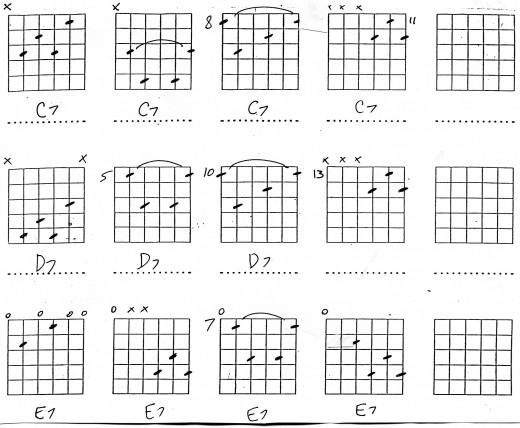
Practical Information
In summary, the guitar is much easier than piano in some respects, as both chord shapes and scale shapes can be moved up and down the neck. On piano the visual element is a lot less obvious, as the shapes change as you move from one chord to the next.
Using the C7, D7, and E7 shapes as an example:
7th chords (dominant chords) will tend to lead to a home chord. So if you are playing C7, a very likely following chord will be F.
For D7, it will be G.
For E7 it will be A.
An exception to this general rule is blues based music, which will often use just 7th chords or near relatives such as 9th and 13th chords.

